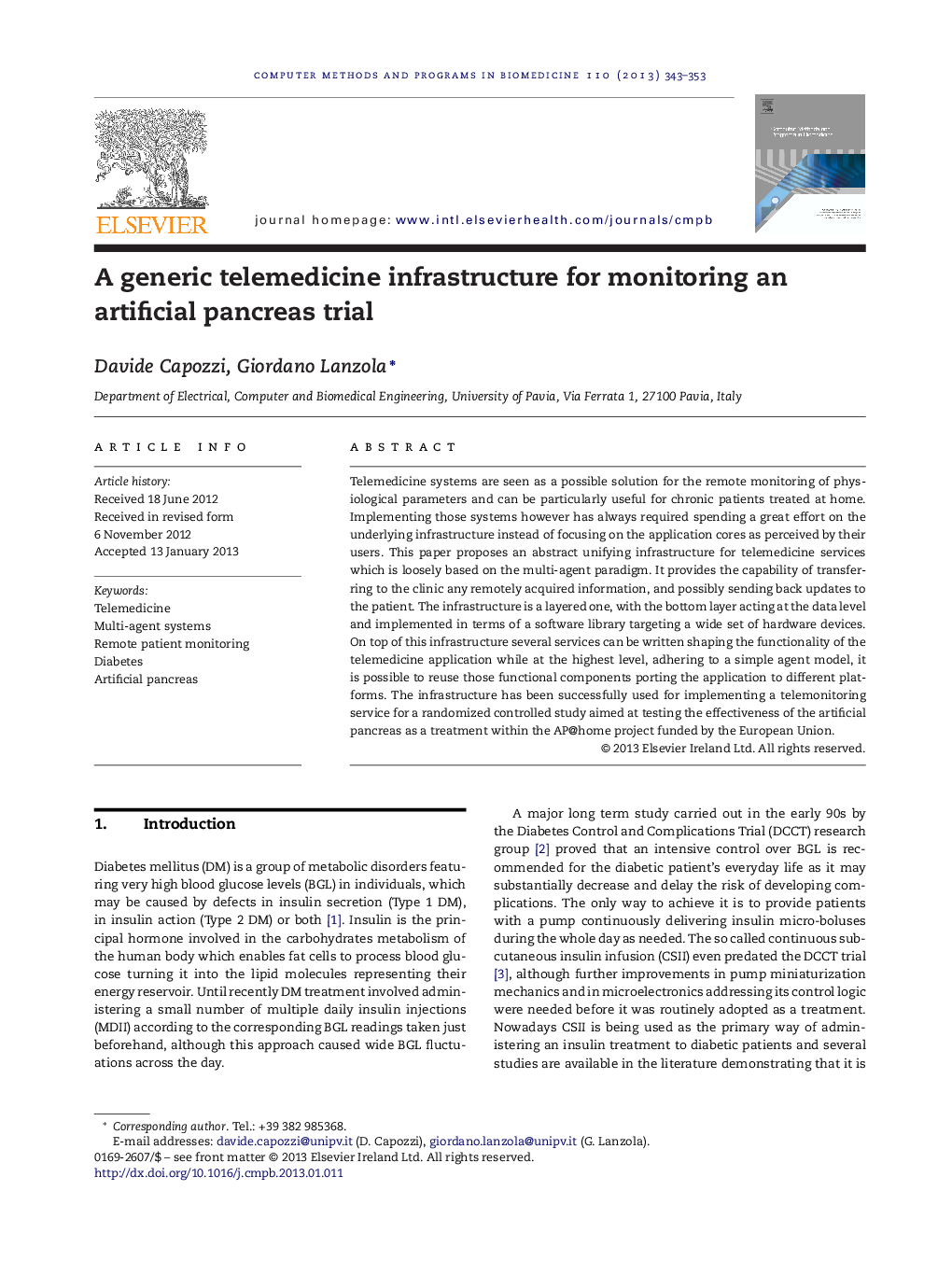| Article ID | Journal | Published Year | Pages | File Type |
|---|---|---|---|---|
| 6891570 | Computer Methods and Programs in Biomedicine | 2013 | 11 Pages |
Abstract
Telemedicine systems are seen as a possible solution for the remote monitoring of physiological parameters and can be particularly useful for chronic patients treated at home. Implementing those systems however has always required spending a great effort on the underlying infrastructure instead of focusing on the application cores as perceived by their users. This paper proposes an abstract unifying infrastructure for telemedicine services which is loosely based on the multi-agent paradigm. It provides the capability of transferring to the clinic any remotely acquired information, and possibly sending back updates to the patient. The infrastructure is a layered one, with the bottom layer acting at the data level and implemented in terms of a software library targeting a wide set of hardware devices. On top of this infrastructure several services can be written shaping the functionality of the telemedicine application while at the highest level, adhering to a simple agent model, it is possible to reuse those functional components porting the application to different platforms. The infrastructure has been successfully used for implementing a telemonitoring service for a randomized controlled study aimed at testing the effectiveness of the artificial pancreas as a treatment within the AP@home project funded by the European Union.
Related Topics
Physical Sciences and Engineering
Computer Science
Computer Science (General)
Authors
Davide Capozzi, Giordano Lanzola,
